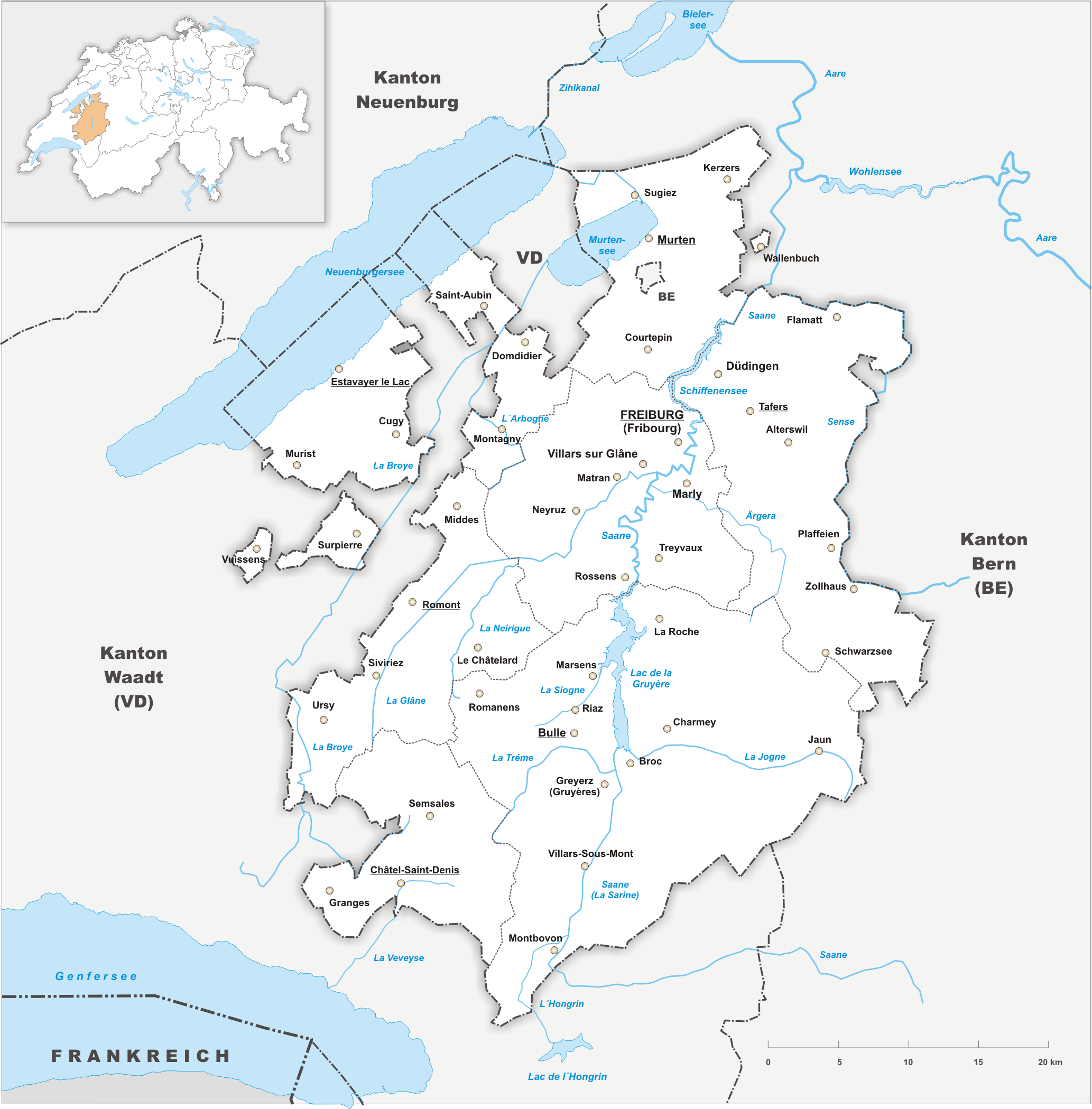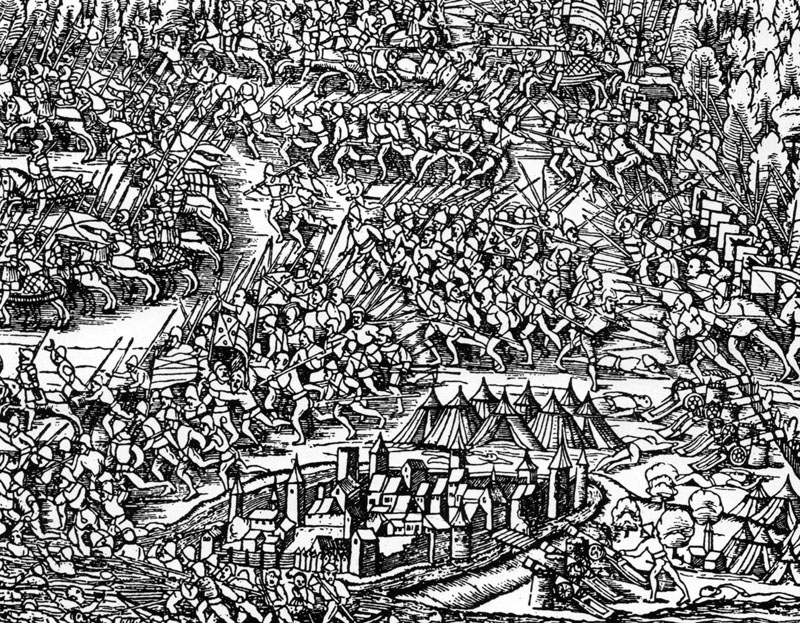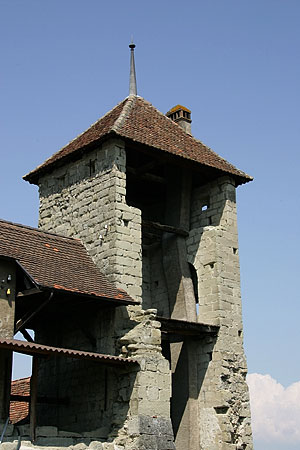|
West Switzerland Company
The West Switzerland Company (french: Compagnie de l'Ouest-Suisse, OS) was a railway company in Switzerland, formed 1854 and absorbed into the Western Swiss Railway in 1872. The OS built a railway network in western Switzerland and connected with France via Geneva in 1858, although Switzerland's first railway was the French Strasbourg–Basel Railway (French: ''Chemin de fer de Strasbourg à Bâle''), which connected Basel with Strasbourg, France in 1844. History In 1854, the Company of West Switzerland gained a concession from the canton of Vaud for the construction of a railway line from Lausanne to Yverdon, with a proposal to continue via Payerne and Murten to Bern. The extension of the route past Yverdon was delayed by the ''Oron rail dispute'' (german: Oronbahnkonfliktes)—a dispute between the canton of Fribourg and Vaud over the route of the railway between Bern and Lausanne. Fribourg sought a route that passed through the city of Fribourg rather than along a flatt ... [...More Info...] [...Related Items...] OR: [Wikipedia] [Google] [Baidu] |
Geneva–Versoix Railway
The Geneva–Versoix Railway (French: ''Chemin de Fer Genève-Versoix'', GM) is a former Swiss railway company that existed officially for only six days in 1858. The line from Versoix to Geneva Geneva ( ; french: Genève ) frp, Genèva ; german: link=no, Genf ; it, Ginevra ; rm, Genevra is the List of cities in Switzerland, second-most populous city in Switzerland (after Zürich) and the most populous city of Romandy, the French-speaki ... was opened by the GM was on 25 June 1858. On the following 1 July the company was absorbed into the Lausanne–Fribourg–Bern Railway (LFB). References Defunct railway companies of Switzerland {{Switzerland-transport-stub ... [...More Info...] [...Related Items...] OR: [Wikipedia] [Google] [Baidu] |
Strasbourg–Basel Railway
The railway from Strasbourg to Basel is a French and Swiss 141.3-kilometre long railway line. It is used for passenger (express, regional and suburban) and freight traffic. The railway was opened in 1840–1844. It was the first railway line to serve Switzerland. Main stations * Gare de Strasbourg * Gare de Colmar * Gare de Mulhouse * Basel SNCF and Basel SBB railway station Line history The concession for the railway Strasbourg–Basel was granted to the ''Compagnie du chemin de fer de Strasbourg à Bâle'', founded by the Koechlin brothers, in 1838. The first sections that were opened in 1840 led from Benfeld to Colmar, and from Mulhouse to Saint-Louis near the Swiss border. In 1841 Koenigshoffen (near Strasbourg) and Benfeld were connected, and Colmar was connected to Mulhouse. Finally in 1844 the sections between Strasbourg and Koenigshoffen, and between Saint-Louis and the Swiss border were opened. With its southern terminus at , it was the first railway line to serve S ... [...More Info...] [...Related Items...] OR: [Wikipedia] [Google] [Baidu] |
Olten–Lausanne Railway Line
The Mittellandlinie ("Midland line") is a railway route in Switzerland. It runs from Olten via Bern and Fribourg to Lausanne. The Olten–Bern railway was completed in 1858 and two years later the Lausanne–Bern railway was opened. In addition, the Mattstetten–Rothrist new line was opened in 2004, which together with the Born Railway and the Grauholz Tunnel, Grauholz line, forms a high-speed line between Olten and Bern. References Railway lines in Switzerland Railway lines opened in 1858 1858 establishments in Switzerland {{Olten–Lausanne railway line ... [...More Info...] [...Related Items...] OR: [Wikipedia] [Google] [Baidu] |
Canton Of Fribourg
The canton of Fribourg, also canton of Freiburg (french: Canton de Fribourg ; german: Kanton Freiburg ; frp, Canton de Fribôrg rm, Chantun Friburg it, Canton Friburgo) is located in western Switzerland. The canton is bilingual, with French spoken by more than two thirds of the citizens and German by a little more than a quarter. Both are official languages in the canton. The canton takes its name from its capital city of Fribourg. History On the shores of Lake Neuchâtel and Lake Morat significant traces of prehistoric settlements have been unearthed. The canton of Fribourg joined the Swiss Confederation in 1481. The area is made up of lands acquired by the capital Fribourg. The present extent was reached in 1803 when Murten (Morat) was acquired. The canton of Fribourg joined the separatist league of Catholic cantons in 1846 (Sonderbund). The following year, its troops surrendered to the federal army. Geography The canton is bounded to the west by Lake Neuchâtel, to the ... [...More Info...] [...Related Items...] OR: [Wikipedia] [Google] [Baidu] |
Bern
german: Berner(in)french: Bernois(e) it, bernese , neighboring_municipalities = Bremgarten bei Bern, Frauenkappelen, Ittigen, Kirchlindach, Köniz, Mühleberg, Muri bei Bern, Neuenegg, Ostermundigen, Wohlen bei Bern, Zollikofen , website = www.bern.ch Bern () or Berne; in other Swiss languages, gsw, Bärn ; frp, Bèrna ; it, Berna ; rm, Berna is the ''de facto'' capital of Switzerland, referred to as the "federal city" (in german: Bundesstadt, link=no, french: ville fédérale, link=no, it, città federale, link=no, and rm, citad federala, link=no). According to the Swiss constitution, the Swiss Confederation intentionally has no "capital", but Bern has governmental institutions such as the Federal Assembly and Federal Council. However, the Federal Supreme Court is in Lausanne, the Federal Criminal Court is in Bellinzona and the Federal Administrative Court and the Federal Patent Court are in St. Gallen, exemplifying the federal nature of the Confederation. ... [...More Info...] [...Related Items...] OR: [Wikipedia] [Google] [Baidu] |
Murten
Murten (German language, German) or Morat (French language, French, ; frp, Morât ) is a bilingual Municipalities of Switzerland, municipality and a city in the See (district of Fribourg), See district of the Cantons of Switzerland, canton of Fribourg (canton), Fribourg in Switzerland. It is located on the southern shores of Lake Morat (also known as Lake Murten). Morat is situated between Neuchâtel and Fribourg and is the capital of the See/Lac District of the canton of Fribourg. It is one of the municipalities with a majority (about 75%) of German speakers in the predominantly French-speaking Canton of Fribourg. On 1 January 1975 the former municipality of Burg bei Murten merged into the municipality of Murten.Nomenklaturen – Amtliches Gemeindeve ... [...More Info...] [...Related Items...] OR: [Wikipedia] [Google] [Baidu] |
Payerne
Payerne (; frp, Payèrna) is a municipality in the Swiss canton of Vaud. It was the seat of the district of Payerne, and is now part of the district of Broye-Vully. The German name ''Peterlingen'' for the town is out of use. History The earliest traces of settlements near Payerne include Neolithic objects and traces of a Bronze Age settlement. There are also burial mounds from the Hallstatt and Latène cultures, including gold necklaces which were found at Le Bois de Roverex. There was a Celtic bridge and a Roman era road in the area of Les Aventuri. There were Roman buildings within and outside the city walls, Roman cemeteries, and a dedicatory inscription of Publius Graccius Paternus. During the Early Middle Ages, the village of Payerne first appeared. In 587, Bishop Marius built the villa Paterniacum and a Chapel to St. Mary in the village. The chapel later developed into a parish church. The present Gothic building was built in the 14th Century over Roman foundatio ... [...More Info...] [...Related Items...] OR: [Wikipedia] [Google] [Baidu] |
Yverdon
Yverdon-les-Bains () (called Eburodunum and Ebredunum during the Roman era) is a municipality in the district of Jura-Nord vaudois of the canton of Vaud in Switzerland. It is the seat of the district. The population of Yverdon-les-Bains, , was . Yverdon is located in the heart of a natural setting formed by the Jura mountains, the plains of the Orbe, the hills of the Broye and Lake Neuchâtel. It is the second most important town in the Canton of Vaud. It is known for its thermal springs and is an important regional centre for commerce and tourism. It was awarded the Wakker Prize in 2009 for the way the city handled and developed the public areas and connected the old city with Lake Neuchâtel. History The heights nearby Yverdon seem to have been settled at least since the Neolithic Age about 5000 BCE, as present archeological evidence shows. The town was at that time only a small market place, at the crossroads of terrestrial and fluvial communication ways. People began to ... [...More Info...] [...Related Items...] OR: [Wikipedia] [Google] [Baidu] |
Lausanne
, neighboring_municipalities= Bottens, Bretigny-sur-Morrens, Chavannes-près-Renens, Cheseaux-sur-Lausanne, Crissier, Cugy, Écublens, Épalinges, Évian-les-Bains (FR-74), Froideville, Jouxtens-Mézery, Le Mont-sur-Lausanne, Lugrin (FR-74), Maxilly-sur-Léman (FR-74), Montpreveyres, Morrens, Neuvecelle (FR-74), Prilly, Pully, Renens, Romanel-sur-Lausanne, Saint-Sulpice, Savigny , twintowns = Lausanne ( , , , ) ; it, Losanna; rm, Losanna. is the capital and largest city of the Swiss French speaking canton of Vaud. It is a hilly city situated on the shores of Lake Geneva, about halfway between the Jura Mountains and the Alps, and facing the French town of Évian-les-Bains across the lake. Lausanne is located northeast of Geneva, the nearest major city. The municipality of Lausanne has a population of about 140,000, making it the fourth largest city in Switzerland after Basel, Geneva, and Zurich, with the entire agglomeration area having about 420,000 inhabit ... [...More Info...] [...Related Items...] OR: [Wikipedia] [Google] [Baidu] |
Vaud
Vaud ( ; french: (Canton de) Vaud, ; german: (Kanton) Waadt, or ), more formally the canton of Vaud, is one of the 26 cantons forming the Swiss Confederation. It is composed of ten districts and its capital city is Lausanne. Its coat of arms bears the motto "Liberté et patrie" on a white-green bicolour. Vaud is the third largest canton of the country by population and fourth by size. It is located in Romandy, the French-speaking western part of the country; and borders the canton of Neuchâtel to the north, the cantons of Fribourg and Bern to the east, the canton of Valais to the south, the canton of Geneva to the south-west and France to the west. The geography of the canton includes all three natural regions of Switzerland: the Jura Mountains, the Swiss Plateau and the (Swiss) Alps. It also includes some of the largest lakes of the country: Lake Geneva and Lake Neuchâtel. It is a major tourist destination, renowned for its landscapes and gastronomy. The largest city is ... [...More Info...] [...Related Items...] OR: [Wikipedia] [Google] [Baidu] |
Bahnhof Morges Der OS
Bahnhof (German for "railway station") is a Swedish Internet service provider (ISP) founded in 1994 by Oscar Swartz in Uppsala, Sweden, and is the country's first independent ISP. Today the company is represented in Stockholm, Gothenburg, Uppsala, Borlänge, Malmö and Umeå. WikiLeaks used to be hosted in a Bahnhof data center inside the ultra-secure bunker Pionen, which is buried inside the White Mountains in Stockholm. History Bahnhof was founded in 1994 by Oscar Swartz. It was one of Sweden's first ISPs. The company is publicly traded since December 2007 under the name BAHN-B (Aktietorget). On 11 September 2008, Bahnhof opened a new computer center inside the former civil defence center Pionen in the White Mountains in Stockholm, Sweden. Controversies On 10 March 2005, the Swedish police confiscated four servers placed in the Bahnhof premises, hoping to find copyrighted material. Although these servers were located near Bahnhof's server park (in a network lab area) the c ... [...More Info...] [...Related Items...] OR: [Wikipedia] [Google] [Baidu] |







